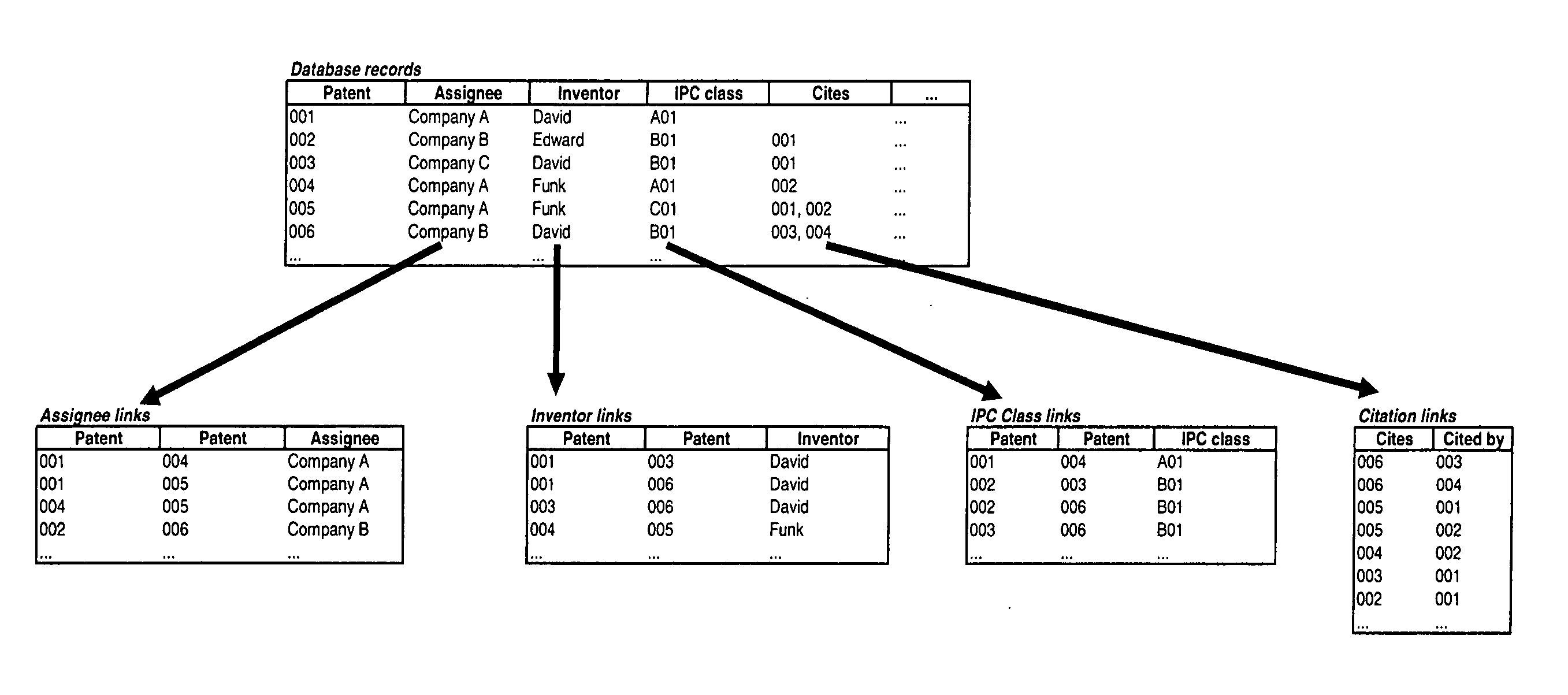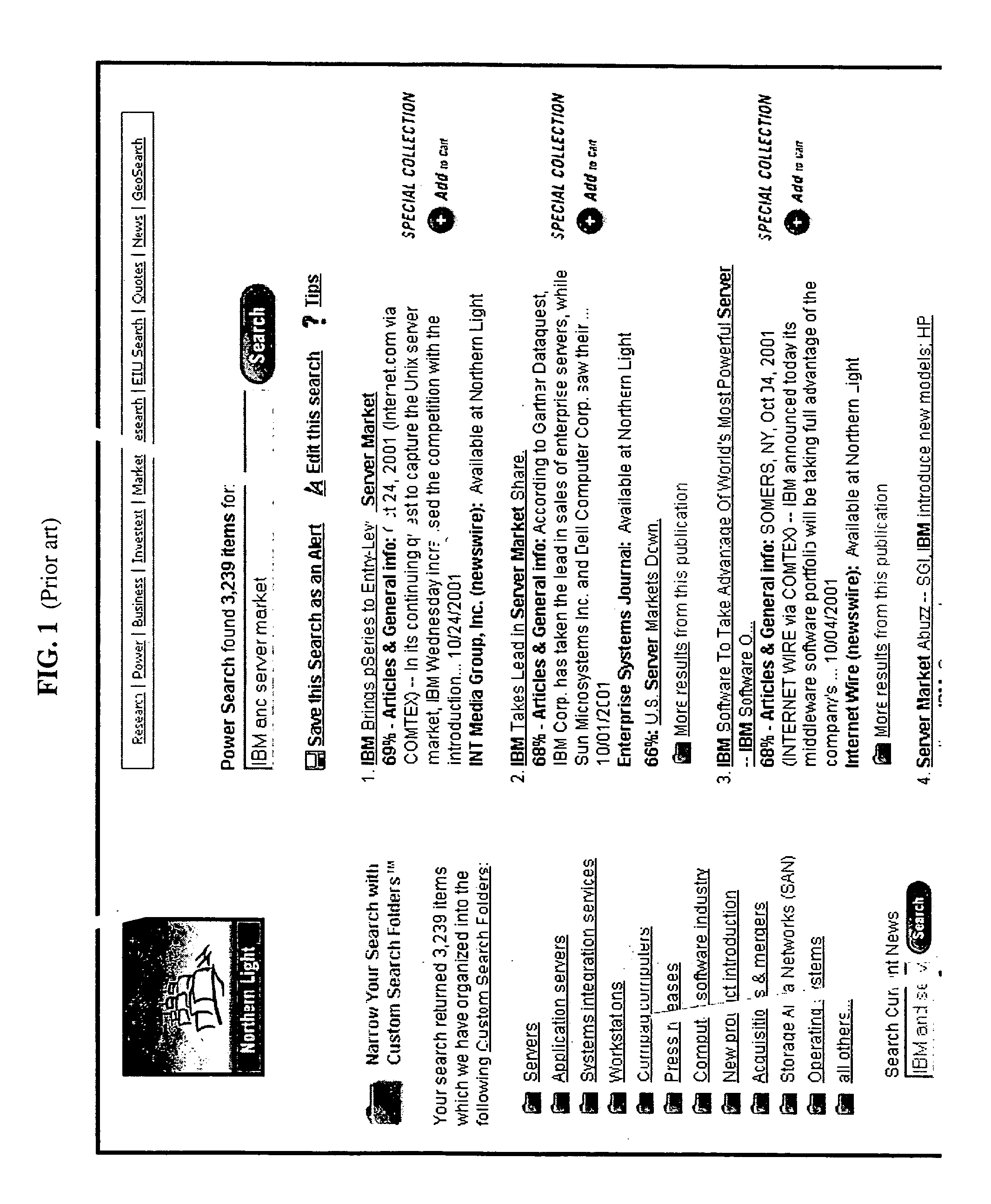Method and apparatus for selecting, analyzing, and visualizing related database records as a network
a database and network technology, applied in the field of data mining and analysis, can solve the problems of information overload, unsubstantial improvement of human mental capacity to asimilate and comprehend information, and unfavorable new arrivals
- Summary
- Abstract
- Description
- Claims
- Application Information
AI Technical Summary
Benefits of technology
Problems solved by technology
Method used
Image
Examples
example 1
Method and Apparatus for Making Sense of the Patent Database
[0244] One or more embodiments of the invention relate to an improved method for making sense of patents in a patent database. One attribute of the patent database is that it is easy to establish the relatedness of documents to each other based on their citation relationship. The following discussion on using citations as a basis for establishing relatedness among patents applies equally to all databases that have citations including but not limited to academic / scientific / medical literature as well as hyperlinks embedded in pages on the World Wide Web which can also be thought of as a type of citation.
[0245] Various embodiments of the present invention can be used to help a business person, engineer, scientist, attorney, patent examiner or other interested party, make sense out of a large set of patents. The challenge is to take a large set of patent documents and find ways to understand the technological developments the...
example 2
Method and Apparatus for Searching for and Analyzing Documents in a Medical Publication Database
[0350] In a second example, one or more embodiments of the invention are applied to searching for and analyzing documents in a database of academic literature. One example of such a database is the medical publication database known as the PubMed database. Application to other academic databases is also possible.
[0351] The PubMed database is a large database of medical research papers appearing in nearly 200 medical journals. It is a rich repository of information about the research domain in the world of medicine. The PubMed database is most frequently used by doctors or other medical professionals who are looking for information about a specific disease, treatment or other subject of medical interest. Their research invariably begins with a Boolean search for a keyword, author or journal after which they are presented with a list of papers matching their selected criteria. The researc...
PUM
 Login to View More
Login to View More Abstract
Description
Claims
Application Information
 Login to View More
Login to View More - R&D
- Intellectual Property
- Life Sciences
- Materials
- Tech Scout
- Unparalleled Data Quality
- Higher Quality Content
- 60% Fewer Hallucinations
Browse by: Latest US Patents, China's latest patents, Technical Efficacy Thesaurus, Application Domain, Technology Topic, Popular Technical Reports.
© 2025 PatSnap. All rights reserved.Legal|Privacy policy|Modern Slavery Act Transparency Statement|Sitemap|About US| Contact US: help@patsnap.com



